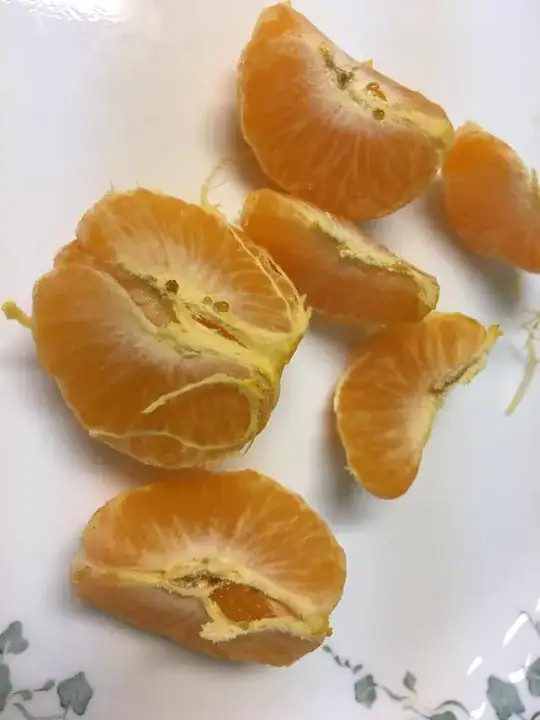From what I understand you are worried about the beads of juice on the orange slices? Those beads are just juice of the orange, a prick could've caused this or just the temperature change from a refrigerator to the warmth of the kitchen. Nothing at all to worry about.
Water, juices will try to escape their turgidity of the cells surrounding the seeds of the orange. I would pop them in my mouth and savor!
No problem that I am able to see or have even heard musings of a problem. Enjoy that orange. My hubby uses knives to peel an orange...I use my fingernails. I eat with random abandon. The fruit inside that peel is probably safer than the water you drink from your tap in the kitchen sink.
